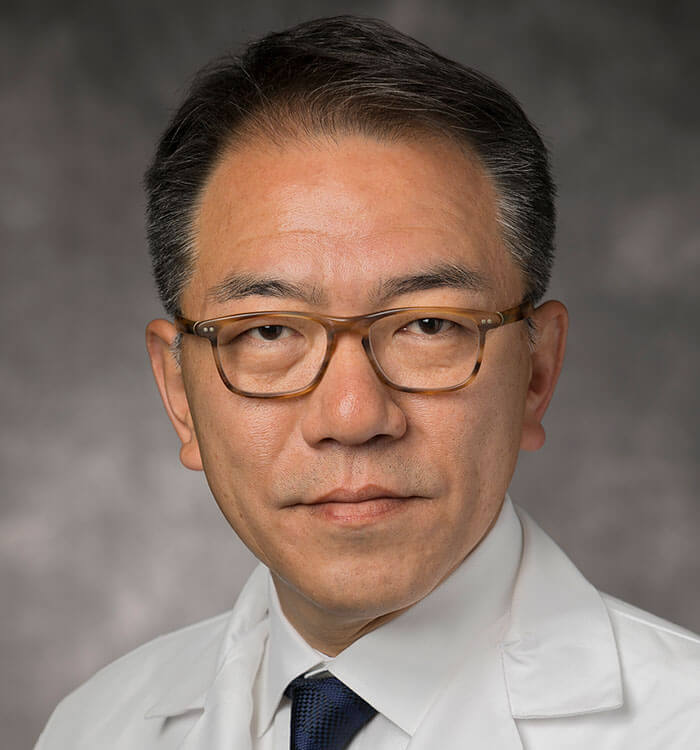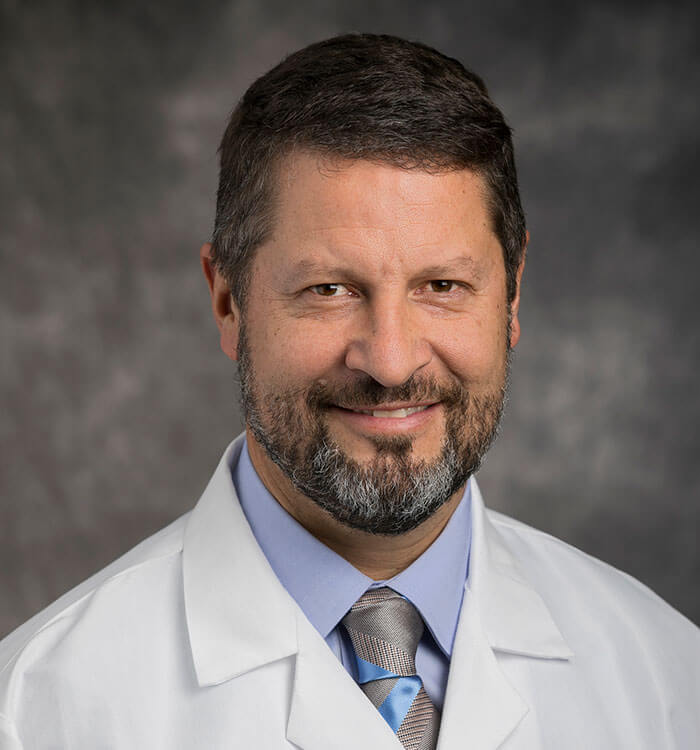A Closer Look at Abdominal Aortic Aneurysm Screening
November 24, 2019
UH center offers aortic screening, novel treatment and multidisciplinary care
Innovations In Cardiovascular Medicine & Surgery| Fall 2019
 Jae Cho, MD
Jae Cho, MD Cristian Baeza, MD
Cristian Baeza, MDRuptured abdominal aortic aneurysm (AAA) is a catastrophic medical event with a survival rate of less than 20 percent. More than 200,000 people in the United States are diagnosed with AAA annually, but national prevalence statistics for undiagnosed AAA are ambiguous, in part because of infrequent screening. In fact, most symptomless aneurysms are discovered only when a patient undergoes imaging for an unrelated cause.
This past June, the U.S. Preventive Services Task Force (USPSTF) issued a B recommendation for one-time ultrasonography screening for AAA in men ages 65 to 75 who have smoked (100-plus lifetime cigarettes) and a C recommendation for men ages 65 to 75 who have never smoked, dependent on individual patient factors such as family and medical history. Citing insufficient evidence on the balance of benefits and harms, USPSTF is not calling for routine screening of women at this time.
These guidelines are in line with both American College of Cardiology and American Heart Association recommendations of one-time screening for men who have smoked or have a family history of aneurysm. The Society for Vascular Surgery’s 2017 recommendations also add screening for women ages 65 to 75 with a history of smoking.
At University Hospitals Cleveland Medical Center, efforts are under way to effectively identify people who are at increased risk for aneurysms, including those with a genetic predisposition to complicated aortic pathology. “Current national guidelines may not be specific enough,” says Jae Cho, MD, Co-Director of the Aortic Disease Center at University Hospitals Harrington Heart & Vascular Institute, and Professor of Surgery, Case Western Reserve University School of Medicine. “They potentially miss people, particularly women with a family history of aneurysm.”
NEW LEADERSHIP
Along with Cristian Baeza, MD, Co-Director of the Aortic Disease Center at UH Harrington Heart & Vascular Institute, and Assistant Professor of Surgery, School of Medicine, Dr. Cho is taking over leadership of the UH Aortic Disease Center, building on the expertise and excellent outcomes of their predecessors.
Drs. Baeza and Cho bring a wealth of knowledge and extensive aortic surgery experience to UH Harrington Heart & Vascular Institute. “We recruited Drs. Cho and Baeza to elevate our capabilities in treating patients with complex aortic disease,” says Vikram Kashyap, MD, FACS, Chief, Division of Vascular Surgery and Endovascular Therapy; Alan H. Markowitz, MD, Master Clinician for Cardiovascular Surgery; and Co-Director, Vascular Center, UH Harrington Heart & Vascular Institute; Professor of Surgery, School of Medicine. “They will foster a multidisciplinary approach to ensure the highest quality care and bring additional innovative techniques to University Hospitals.
“The UH Aortic Disease Center has been evolving to reach this place in time, bringing together the people, resources and technology needed to offer a comprehensive center of excellence dedicated to providing a full spectrum of aortic care,” says Dr. Baeza. “This is a modern, multiple-modality approach to aortic pathology.”
A recently opened state-of-the-art cardiovascular imaging unit with a hybrid endovascular suite streamlines patient services, from diagnosis and treatment through repair and follow-up. Additionally, experts in cardiothoracic and vascular surgery, vascular medicine, interventional cardiology, cardiovascular medicine, anesthesia, imaging and genetics will provide leading-edge evaluation and intervention for aortic valves, the ascending aorta, descending thoracic aorta and the infrarenal aorta down to its bifurcation, including:
- thoracoabdominal, thoracic and abdominal aortic aneurysms
- acute and chronic aortic dissections
- penetrating aortic ulcer
- aortic intramural hematoma
- congenital conditions
- genetically predisposed conditions, including collagen vascular disease: Marfan syndrome, Ehlers-Danlos syndrome, Loeys-Dietz syndrome
STRATEGIC PRIORITIES
“Aortic disease is a formidable condition,” says Dr. Cho. “Our strategic priorities include comprehensive medical treatment for routine and complex pathology, multidisciplinary care for genetically predisposed aortic conditions and participation in national quality improvement initiatives and clinical trials to study the long-term outcomes of aortic interventions.”
Additionally, the co-directors are going into the community to support physicians regionally, sharing screening guidelines and indicators for timely medical intervention. Patients referred to the UH Aortic Disease Center have access to both cardiac and vascular specialists through a seamless and efficient model of care. Advanced open and minimally invasive percutaneous procedures such as endovascular aneurysm repair are performed with superior outcomes.
EMERGENCY RESPONSE
Soon, surrounding emergency departments and urgent care centers will be able to connect to an on-call UH Aortic Disease Center specialist through a central call line. “When presented with a highly complicated aortic condition or aortic catastrophe, doctors can reach us with a single phone call,” says Dr. Baeza. “We are developing an emergency response system so that our experts can consult in real time to assess emergency aortic cases and guide next steps.”
BUILDING FOR THE FUTURE
Another priority shared by Drs. Baeza and Cho is a commitment to promoting the UH Aortic Disease Center on a global stage. “Our goal is to establish a robust program such that we entice physicians both nationally and internationally to come to University Hospitals and complete fellowships in complex open aortic surgery and endovascular surgery,” says Dr. Cho. “We hope to help future generations develop expertise in transformational aortic care.”
For more information about the UH Aortic Disease Center or to refer a patient for screening or treatment, call 216-553-1439 or email Cristian.Baeza@UHhospitals.org or Jae.Cho@UHhospitals.org.


